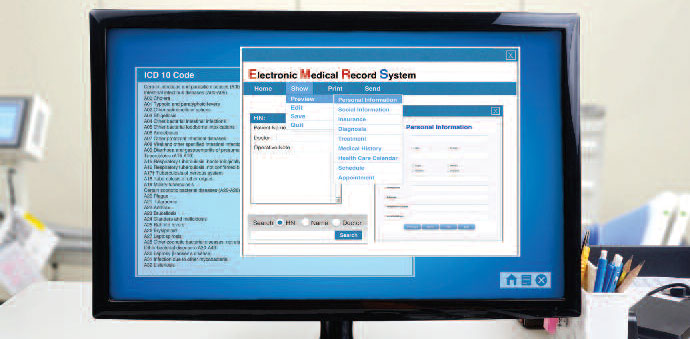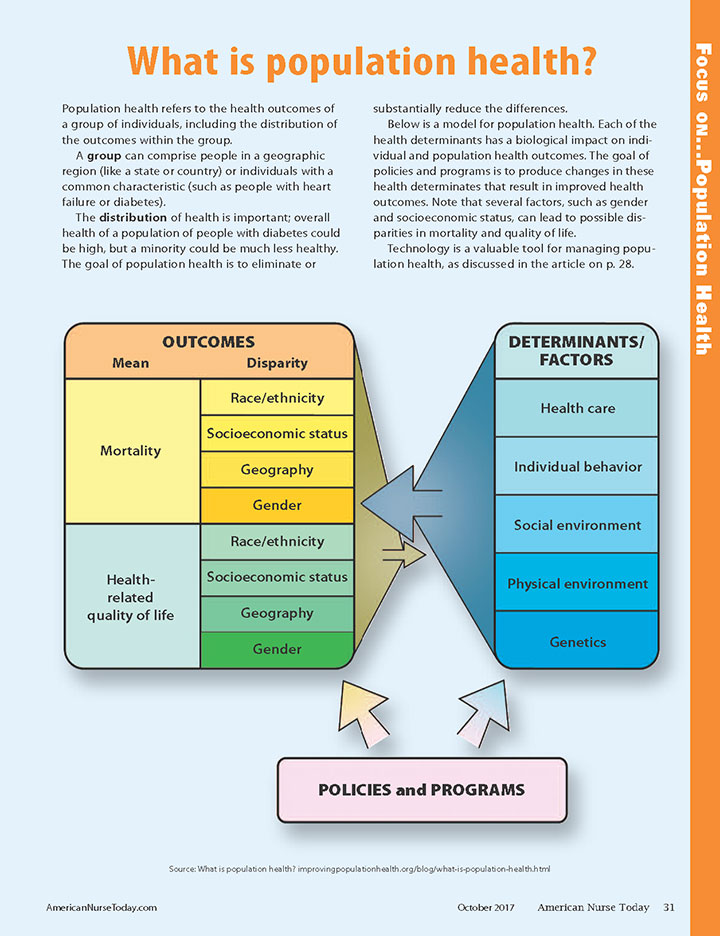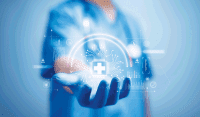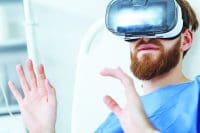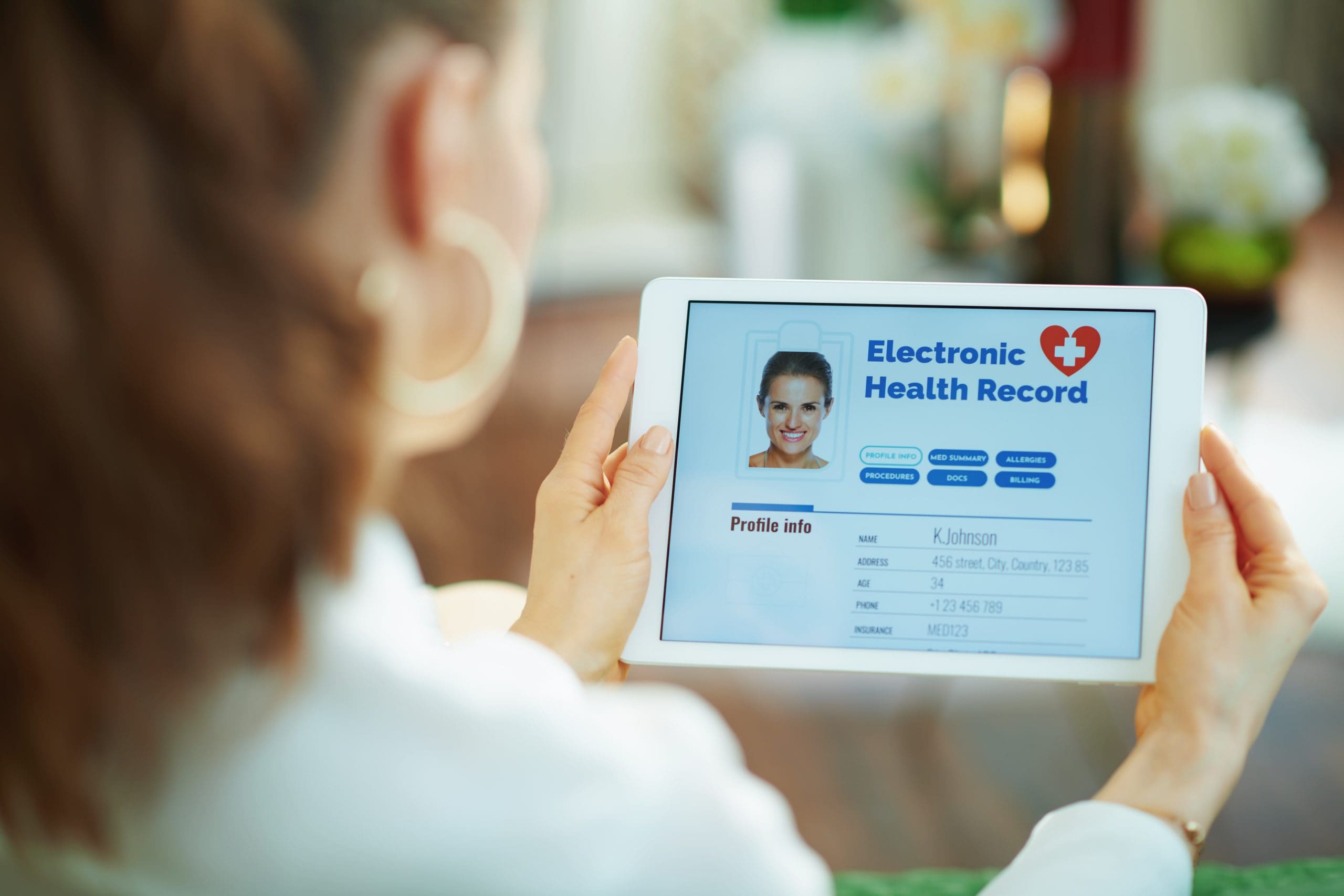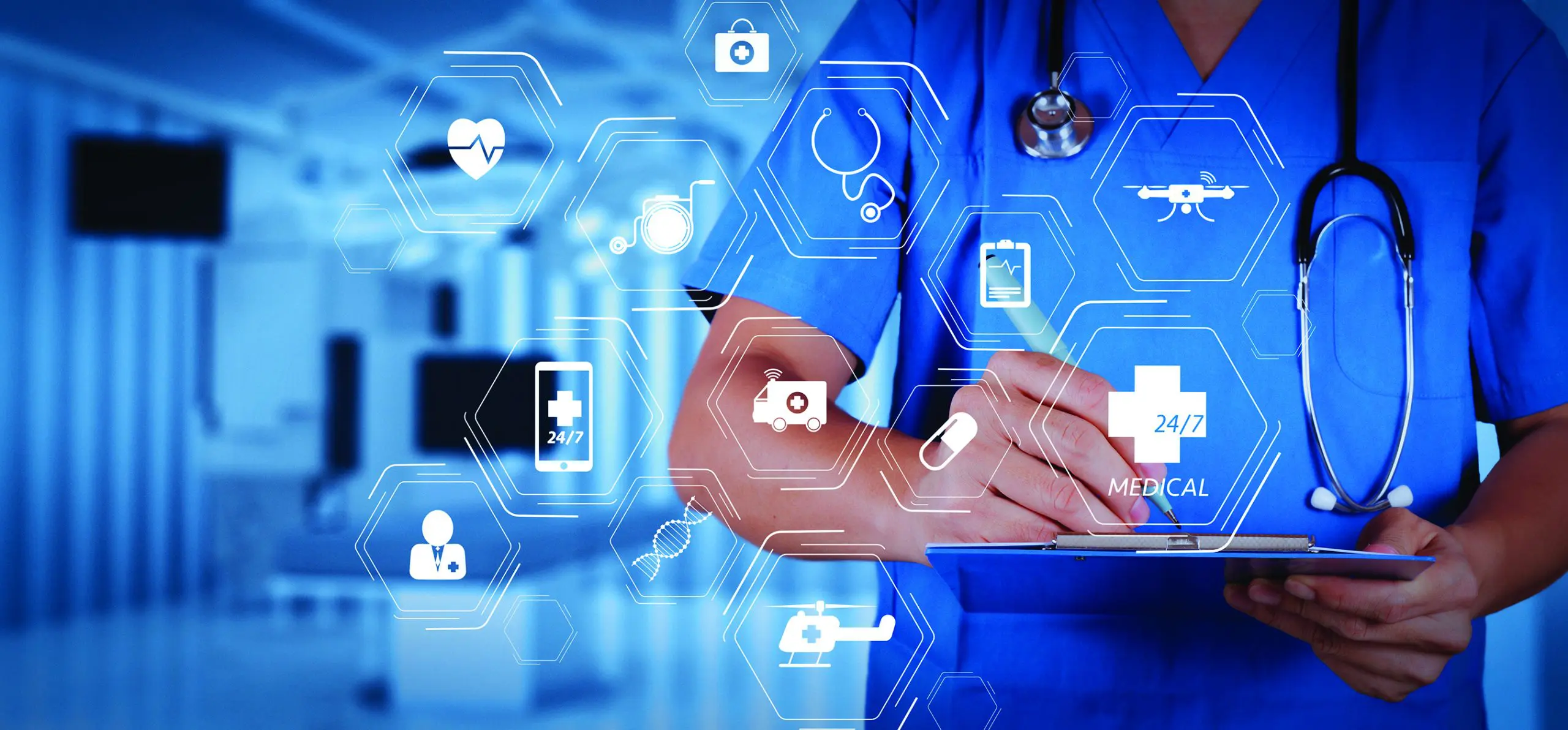The role of EHRs and other information technology in patient care
Takeaways:
- The role of the nurse in positively impacting patient outcomes through population health strategies is evolving.
- Nurses who are engaged in population health management programs use a variety of informatics tools and techniques to successfully target and reach patients who are most at risk beyond traditional claims data.
- As access to information technology tools such as portals, mobile applications, and telehealth expands, the nurse involved in population health management programs will have even more opportunities to actively engage patients in their care to positively impact outcomes.
By Marisa L. Wilson, DNSc, MHSc, RN-BC, CPHIMS, FAAN
John Davidson, age 76, has a history of heart failure (HF), hypertension, and diabetes. Two years ago, his HF symptoms started to get worse. When they become too hard to manage at home, his wife calls an ambulance to take him to the emergency department, where he receives noninvasive ventilation, vasodilators, and I.V. loop diuretics. Once stabilized, he is admitted to a medical-surgical unit for a few days until his symptoms subside. Then he is discharged home.
For Mr. Davidson, this episode is part of a recurring cycle of HF readmissions, which have become more frequent. To help stop this cycle, his healthcare providers arrange for him to enter a population health management program for HF patients. The program includes ongoing patient and caregiver education, regular communication with providers, symptom monitoring and management, and an emphasis on self-care activities (such as diet, activity, and symptom management). It’s supported largely by technology—from recruitment and communications through ongoing monitoring. Nurses are key members of the interdisciplinary team that manages the program.
Mr. Davidson’s population health-management program targets patients at high risk for poor HF management and frequent readmissions. These programs were developed to help move care delivery from the fee-for-service model (where the quantity of care is important) to one that focuses on quality of care and improved patient outcomes through a bundled model across the care continuum. (See What is population health? Infographic at the end of the article.)
To successfully implement this model, information technology tools and informatics techniques are used to:
- determine the patient population of interest
- find the practices and evidence to manage the target population
- operationalize interactions between patients and interdisciplinary team members
- monitor quality of outcomes.
Claims data vs. EHR data
Claims data have long been considered the starting point for determining patient populations of interest and monitoring outcomes. (See What are claims data?) Although such data are standardized, structured, and easily available, alternative data sources have become more available, thanks to the rapid expansion and capabilities of technology. Today, data entered into the patient’s electronic health record (EHR) and collected through interactions mediated by mobile appli-cations, patient portals, and telehealth/telemedicine applications are joining claims data to help interprofessional teams identify, manage, and evaluate high-risk populations. The goal: improved quality of life, better outcomes, and reduced costs.
What are claims data?
| Claims data include patient demographics, diagnosis codes, service dates, and service costs. These data come from entities that pay for the patient’s health care (such as insurance companies, health maintenance organizations, and the Centers for Medicare & Medicaid Services). They’re available after an inpatient, outpatient, emergent, or urgent care event has occurred and the bills stemming from that care have been paid. Claims data represent a starting point for identifying and understanding high-risk populations. They’re commonly used to stratify patients into risk categories. They also identify high-risk patients’ main medical concerns and how much their care costs. However, claims data are retrospective and can be months or even years old, which reduces their usefulness in real-time, proactive population health planning. Moreover, they don’t provide the rich clinical, social, and behavioral data needed to fully understand and manage high-risk populations and keep them as healthy as possible and living optimally. In addition, claims data don’t yield insight into potential contributions of the entire interdisciplinary team on patient outcomes and provide a viewpoint only into the activities of the team members who can bill for services. |
EHR data include vital signs, allergies, laboratory results, imaging test reports, immunizations, specific medication information, and treatment responses. The EHR also contains details about processes of care; provider impressions; information that the patient volunteers about his or her concerns; and assessment, intervention, and outcome data. In short, EHR data provide a much fuller clinical picture than claims data, offering greater insight into patient outcomes. (See Important clues from the EHR.)
Important clues from the EHR
Data from the electronic health record (EHR) provide more complete information on population questions and concerns that may indicate increased risk, such as the following: |
Although EHR data provide a real-time look at the details of managing high-risk patient populations, the data must be standardized, complete, accurate, and representational of the input of all interprofessional team members across the transitions of care. To more accurately target and manage health populations of interest, many healthcare organizations are using business intelligence, visual analytics, and data mining tools to harvest information from EHRs. Nurses and other healthcare providers who enter data into a patient’s EHR should realize that as an aggregate, that data will be compiled along with data from other patients to manage high-risk populations to help improve outcomes.
Role of patient portals, mobile apps, and telehealth/telemedicine
Engaging patients in their own self-care is an important foundation of successful population health management. Patient portals, mobile apps, and telehealth/telemedicine can promote this engagement.
As part of his population health-management program, Mr. Davidson receives automated phone calls through which he reports his weight and symptoms. He and his wife also use his patient portal to report his symptoms, send messages to his providers, and obtain medication education. Changes in certain health parameters trigger calls by the care management nurse, who, along with a nurse practitioner, provide ongoing treatment for symptom control. This nurse also can request a dietary consult, which triggers a call to a nutritionist, who provides education on reducing sodium intake to Mr. Davidson and his wife. Over the next year, a telehealth program is added, allowing more robust audiovisual communications and interactions between Mr. Davidson and his healthcare team.
Patient portals
Currently, only a handful of basic patient portals engage patients. Instead, they act as a one-way source of selected data from the provider, perhaps with secure messaging, appointment setting, refill requests, and limited targeted health information functionality. Second-generation patient portals will need to be more robust, allowing patients and approved caregivers to enter patient-generated data for the provider to review and consider. For patients with HF, the data include daily weights, blood pressure readings, edema levels, sodium intake, and activity monitoring. Providers then could be alerted to changes, allowing them to interact with patients and respond earlier, helping to prevent deterioration.
Mobile apps
Most mobile health apps focus on wellness and medical management driven by consumers’ desire for control and information, using the same smart devices that have become a part of everyday life. Some population health-management programs have embraced these apps
as a way to provide their target groups with better, faster, and more cost-effective care, communication, and treatment.
Collectively, mobile apps can provide the following benefits:
- streamline workflow by improving communication and access to providers
- assist with monitoring and treating specific diseases (such as diabetes) through daily testing and results reporting
- aid in mental health assessment, diagnosis, and treatment through interactive technologies that provide feedback and promote positive behavior change
- support diagnosis, intervention, and outcomes improvement for cardiac, dental, respiratory, and women’s health issues.
Robust and tested mobile apps used by high-risk patient groups and supported by care providers have the potential to deliver near real-time early identification of those pivotal moments that can signal potential deterioration of target health conditions. Smartphone apps with built-in diagnostic capability, portable physiologic monitors, and wearable devices can help identify and engage patients to improve outcomes and quality of care.
Telehealth/telemedicine
Telehealth/telemedicine harness the power of videoconferencing, wireless access, connected devices (such as scales), and smartphone technology to offer virtual provider visits to strengthen care management for high-risk populations. These technologies allow remote monitoring, telephone advice lines, real-time remote diagnosis, and real-time specialist consults—without geographic or transportation limitations. Such services can be offered between a home and a care provider, between a convenient local site and a care provider, or between care providers (as in the case of consults). The top five target conditions for telehealth/telemedicine services are HF, diabetes, hypertension, chronic obstructive pulmonary disease, and mental health.
Rethinking health information technologies
As a patient in a population health-management program, Mr. Davidson remains connected to a team of providers on an ongoing basis, using selected high-tech tools that help him maintain an optimal level of physiologic functioning and well-being. Provider data from encounters with him and other patients in his risk group are ac-cumulated and analyzed so all patients can receive the best care while also allowing individualization to address each patient’s specific needs.
The shift away from episodic, event-driven care to care aimed at identifying and managing high-risk populations of patients using standards, evidence, communication, and engagement requires providers to rethink the role of health information technologies. No longer will technologies be used to solely document a single care event. Instead, innovative technologies, supportive networks, and informatics tools will be used to promote interdisciplinary teamwork, more efficient workflows, and improved communications—as well as to engage and educate patients so they can attain a higher quality of life and better outcomes across a continuum of care and in the community.
Through coordination, communication, and integration using the same information technology and informatics tools, nurses can play a key role in a team that manages patients like Mr. Davidson. These valuable tools allow them to practice at the highest level of their education.
Marisa L. Wilson is an associate professor and specialty track coordinator in MSN Nursing Informatics in the department of Family, Community, and Health Systems at The University of Alabama at Birmingham.
(Names in the clinical scenario are fictitious.)
Selected references
Bresnick J. Which healthcare data is important for population health management? HealthIT Analytics.com. June 8, 2017.
Community Care of North Carolina. Congestive heart failure management program.
Haas SA, Vlasses F, Havey J. Developing staffing models to support population health management and quality outcomes in ambulatory care settings. Nurs Econ. 2016;34(3):126-33.
Kao DP, Lindenfeld J, Macaulay D, et al. Impact of a telehealth and care management program on all-cause mortality and healthcare utilization in patients with heart failure. Telemed J E Health. 2016;22(1):2-11.
Nesbitt TS. The evolution of telehealth: Where have we been and where are we going? In: Lustig TA. The Role of Telehealth in an Evolving Health Care Environment. Institute of Medicine. Washington, DC: National Academies Press; 2012: 11-6.
Office of the National Coordinator for Health Information Technology. Health IT Dashboard. August 3, 2017.
Wells TS, Hawkins K, Bhattarai GR, Wicker ER. Rapid identification of signature moments to improve engagement in population health programs. Popul Health Manag. 2017; 20(2):90-2.
Focus 0n Population Health


